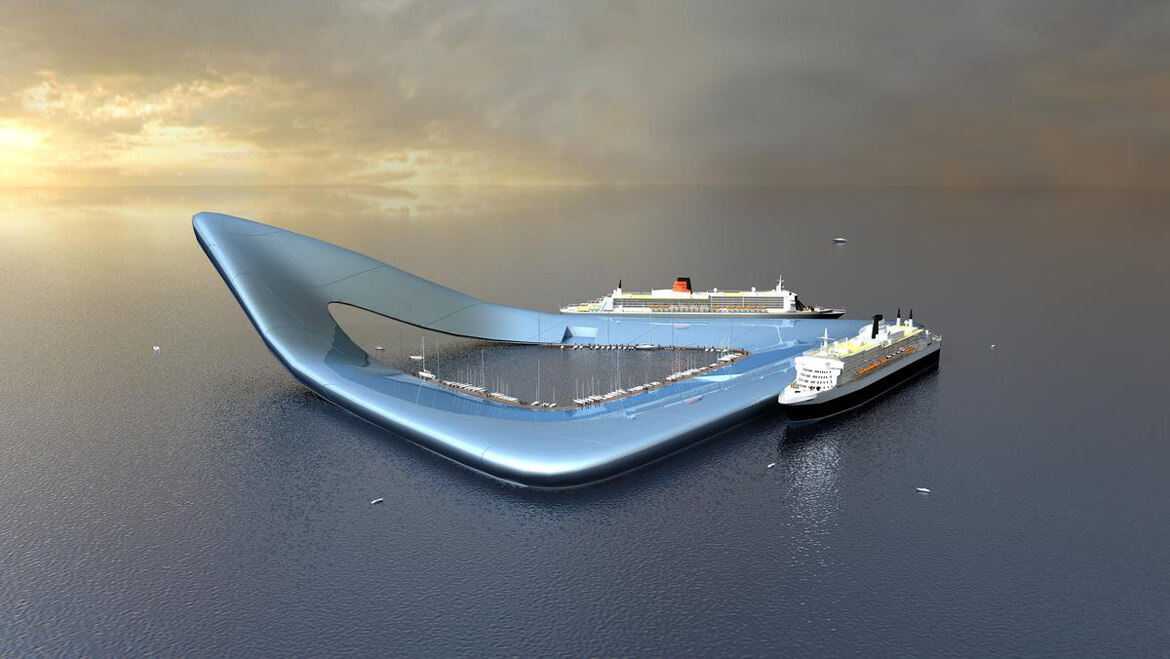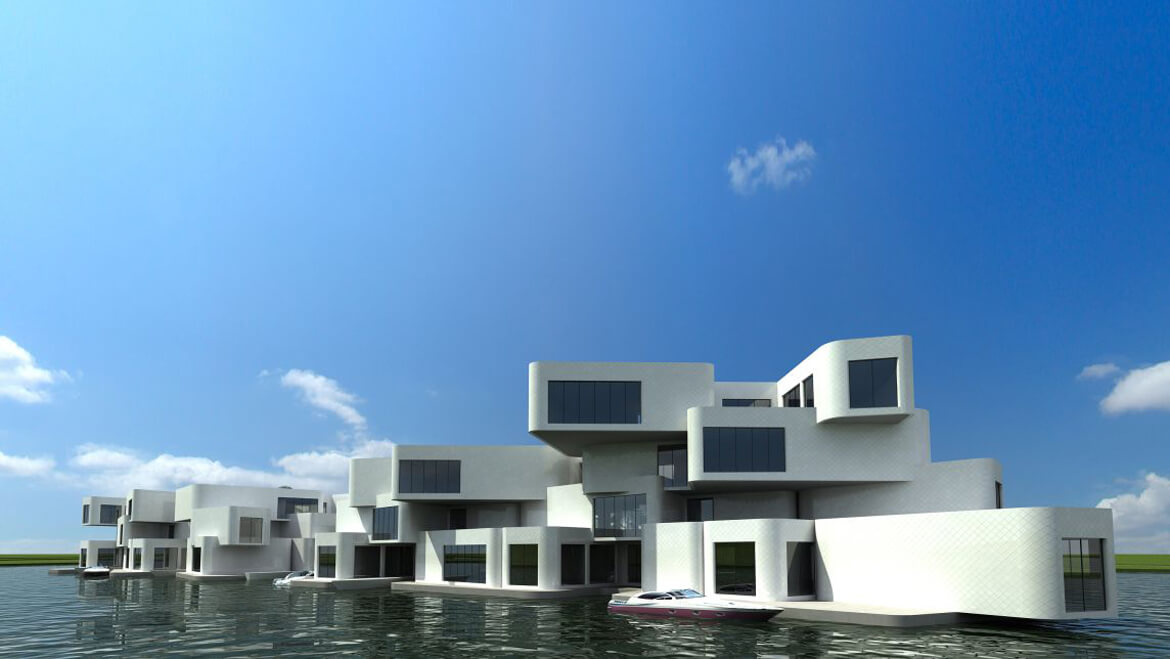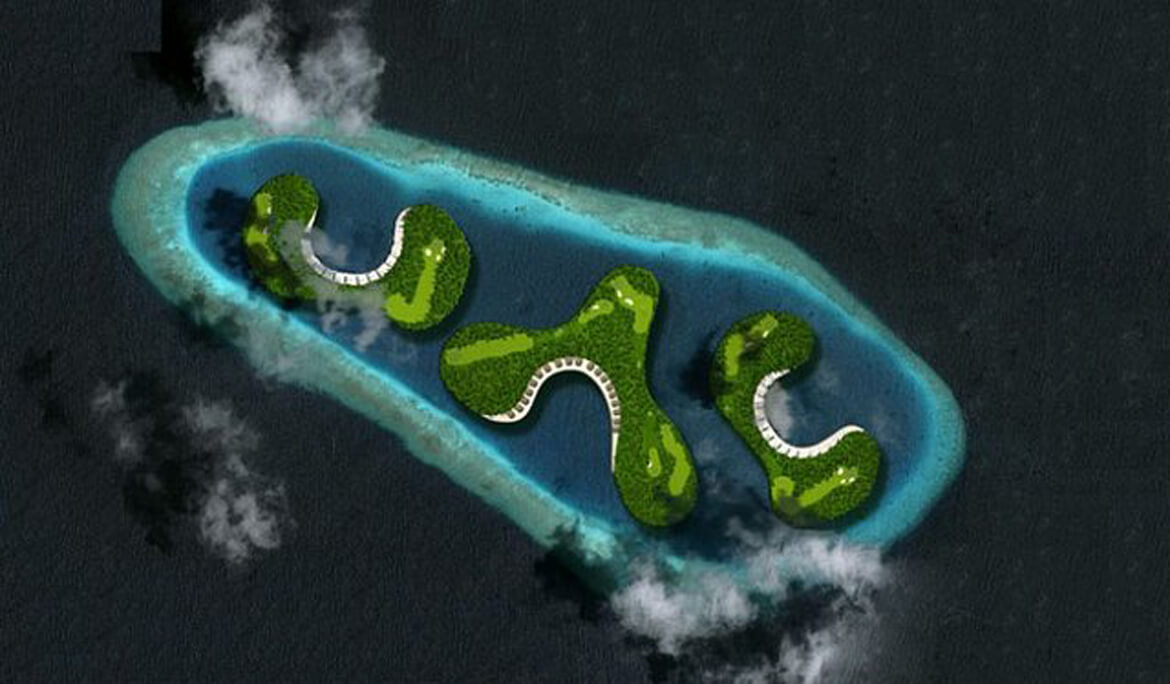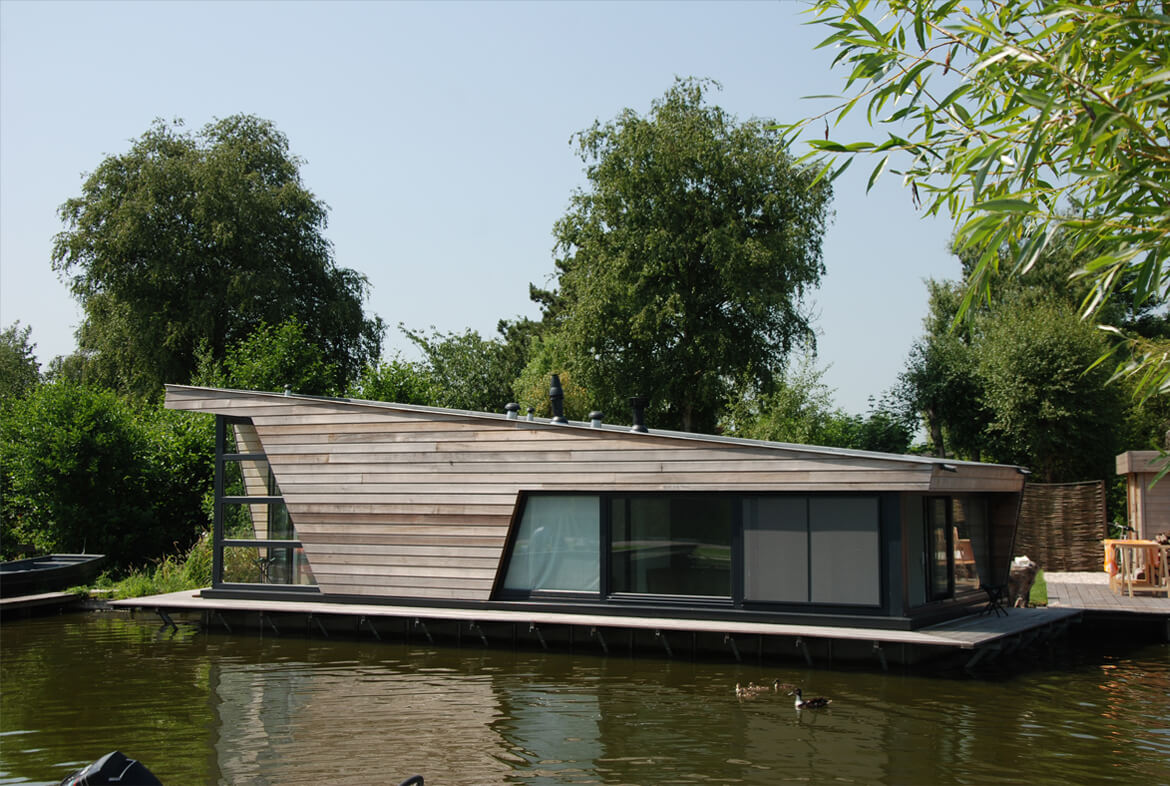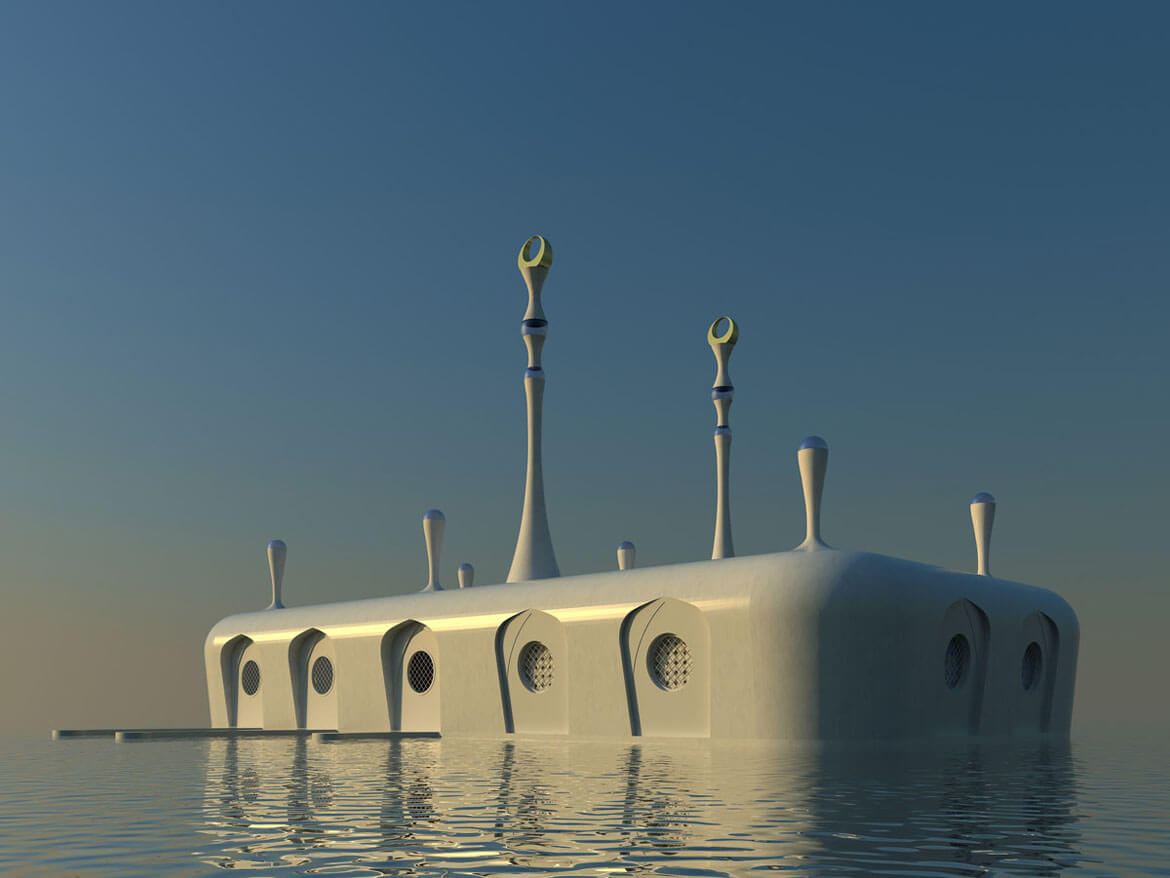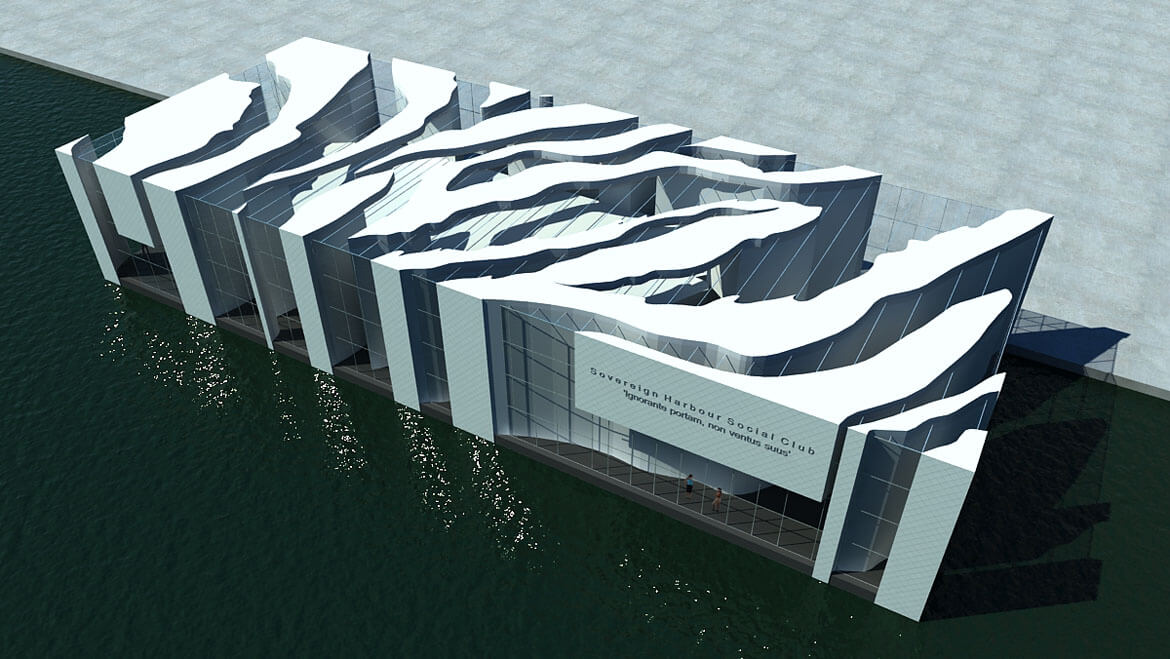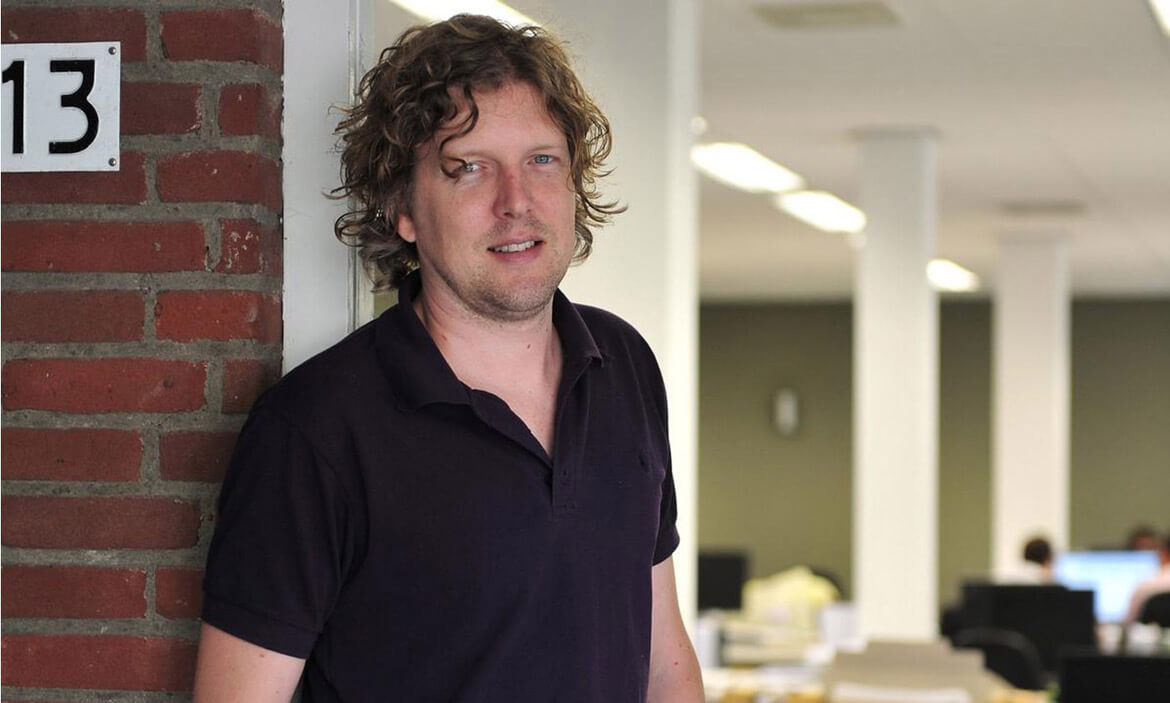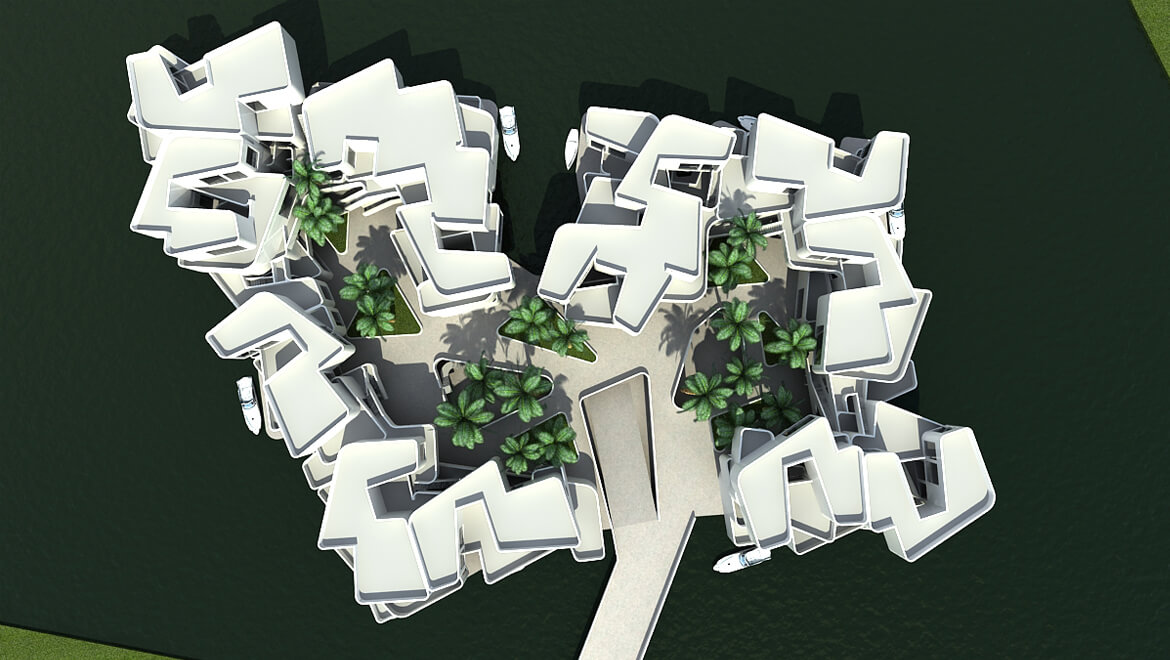What Does a $500 Million Golf Course Look Like?
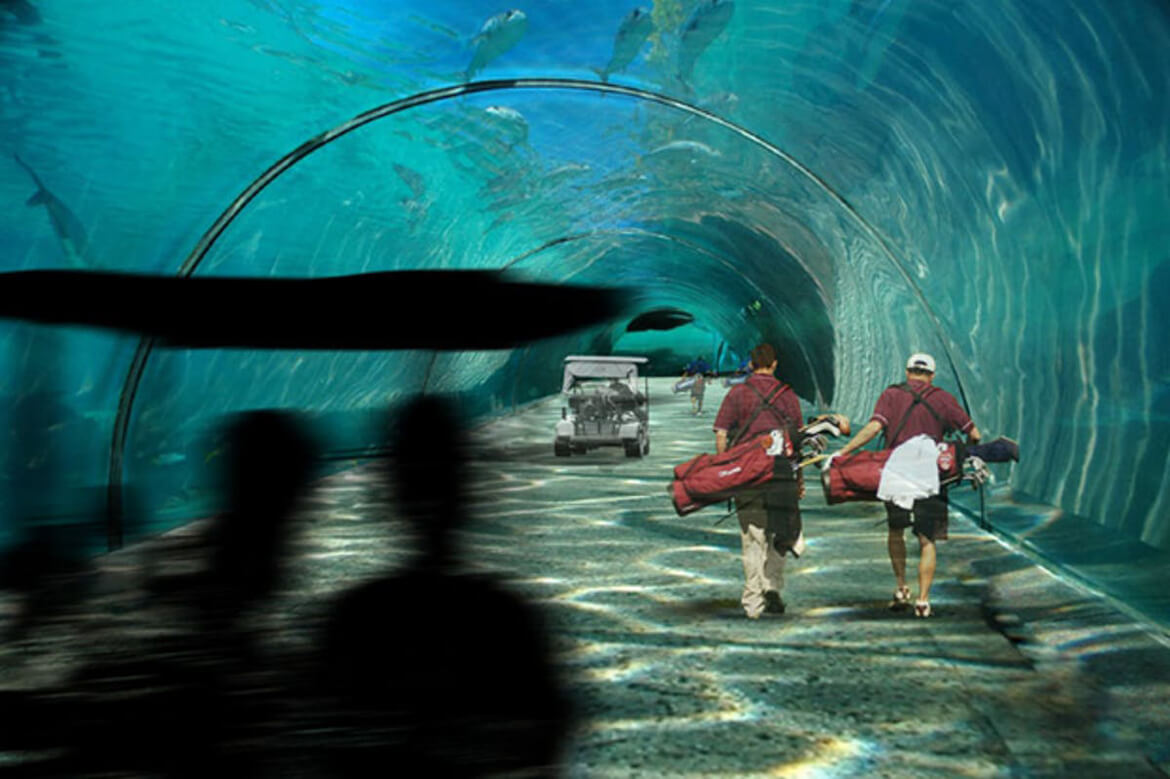
Forbes, Larry Olmsted
Even Jules Verne could not have seen this one coming. Dutch Docklands, a player in the world of floating technologies (or making land where there was no land) has announced plans to build a $500 million floating golf course off the Maldives coast. While there are plenty of golf courses that claim to be “on” the water, this one would quite literally be atop the Indian Ocean.
The concept is a series of man-made islands with one or more holes on each, linked by transparent undersea tunnels. Golfers walk or ride through these submerged pathways, taking in the seafloor sights while pondering which iron to use next. And the clubhouse? You’ll have to take an elevator to the sea bottom to get to it. At half a billion dollars, it will be by far the most expensive golf course ever built.
The floating golf mecca, which is scheduled to be open for play in 2013, will be run by industry leader Troon Golf, the gold standard of international high-end golf course and club management. The yet-to-be-named project is part of a larger government-approved development which will include 200 villas and about 45 private islands off the Maldives coast.
In historic terms, our understanding of golf excess first shifted in 1990, when the Las Vegas wunderkind Steve Wynn built mega-course Shadow Creek. To say no expense was spared in construction is a gross understatement. It is said Wynn gave architect Tom Fazio a blank check and a blank desert canvas. Serious earth moving on the 320-acre site boosted the elevation from less than six feet to more than 213 feet. Nearly 21,000 fully mature trees, mostly pines and cottonwoods, were transplanted. While no numbers were released, the best guess in the business is that Shadow Creek cost about $40 million to build, then the most expensive course in history. That’s about $70 million today or less than one-seventh of the proposed Maldives course cost.
These days the title of most expensive golf course on earth belongs to one of two New Jersey neighbors (private clubs do not have to release cost reports). The number $250 million has been tossed around for valuations of Liberty National, the pet project of Reebok founder Paul Fireman. The ultra-exclusive course is known for its granite walking bridges and $500,000 joining free. Nearby Bayonne Golf Club has merely been rumored to have cost in the $150 million-plus range, mainly due to a huge undersea dredging project required as part of the permitting. If the new Dutch Docklands project comes to fruition – even on budget – these bragging rights will have to move halfway around the world.
Floating Islands Golf Course Trend and the Green Future Awaiting Them
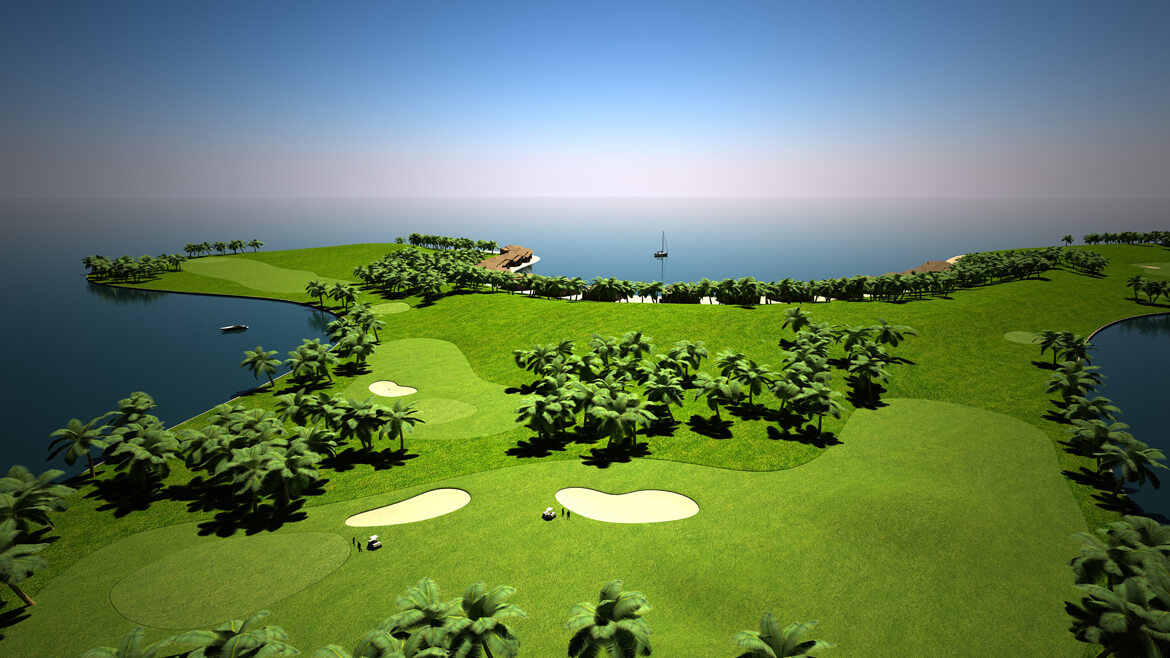
The New Ecologist
The majority of people would have never thought that golf courses will look any different from the look they have nowadays.
Well… in this case they never heard about the upcoming projects that seem to revolutionize the traditional concept of golf, and add a whole new aspect to it.
One of the most spectacular golf courses that already have a concept design is said to be built in the Maldives. This region is best known for the underwater life that it has, and this is exactly what the designers will take advantage of.
Their purpose is to create a floating golf course with 18 holes that would be connected through underwater tunnels. The budget of this project is of about $500 million.
To realize the golf course there will be several artificial islands built, each of them having 2-3 holes. It is important about the course that it will have no footprint on the environment. This is only possible because it is said to have some special techniques of water cooling, use of solar energy and sweet water collection through desalination while floating on salty water.
The new course would be located only five minutes away from the Male International Airport. After the course will be built, the creators would like to design luxury accommodation that would also be connected via underwater tunnels.
The accommodations will overlook the golf course and the coral reefs getting the visitors in touch with the beauty of underwater world. The project is supposed to be finished in 2015.
The creators of the project expect the tourism in the Maldives to boost because the majority of golf fans would like to visit this course, preferably several times. The new project is also said to help the economy of the country.
A similar project has been already created in Idaho. The Coeur d’Alene Golf and Spa Resort is known for the floating island it has. This is the first thing that the visitors observe from the parking lot.
The golf course has 14 holes, and four of them can be found on the island. There is another famous hole, the fifth, which is blocked by a hulking rock. For this the players need a high tee to be able to shoot over the rock.
Another thing that the course is really well known for is the service that it offers. There are numerous golf carts that have mahogany paneling and heated leather seats. In order to get to the island, there is water taxi that would get you there.
As you might see, the game of golf has become a lot more lately, than it has been at the beginning. In our days it isn’t that important to play and score, but to brag about the places that you have visited. If those places are closer to the environment than ever the beauty they carry is admired even more.
You can be sure that in case you tell your friends that you have been at one of these places, they will be surprised and you will get the opportunity to tell them all about the trip. The green touch will make the golf even more popular and the perspective of such projects makes this elegant sport a flag ship for the natural welfare.
Click here to read the article
Water hazard! $500 million floating golf course planned for Maldives

CNN, Will Tidey
You’ve just finished a round of golf on a floating course in the middle of the Indian Ocean. An underwater tunnel leads you to the clubhouse, where a glass elevator drops down to a main bar that doubles as a spectacular natural aquarium.
It might sound far-fetched, but a $500 million development in the Maldives is set to make the world’s biggest water hazard a reality — and at the same time offer a potential long-term solution to the threat of climate change in the area.
Designed by floating architecture specialists Dutch Docklands, the proposed site is just a five-minute speedboat ride from Maldives capital Male, and will offer 27 holes of golf, set upon three interlinked islands.
The government-approved development will also boast around 200 villas, 45 private islands and a conservation center — and all at little or no cost to the wildlife-rich coral reefs it will call home, according to the people behind it.
“We told the president of the Maldives we can transform you from climate refugees to climate innovators,” said Paul van de Camp, CEO of Dutch Docklands.
“And we have a way of building and sustaining this project that is environmentally friendly too. This is going to be an exclusively green development in a marine-protected area.”
With over 80 percent of their 1,190 coral reef islands no more than a meter above sea level, the Maldivian government is at the forefront of the battle against climate change.
As sea levels reach dangerous levels, one option is to build defense walls, as they have around Male. Another is to buy land from other countries and effectively move their population to other areas. The third is to live on floating landscapes.
“Climate change is upon us and the Maldives are feeling it most. That’s why they’re leading the way in trying to find a way to combat the problem.” said Mark Spalding, senior marine scientist at the Nature Conversancy.
“But building on floating islands clearly comes with a risk of pollution. Golf courses need pesticides and you need to deal with that properly to make sure it doesn’t get into the ocean. There’s also the issue of desalinating the water to irrigate the course. That has to be done cleanly too.”
Dutch Docklands appear to have a green solution. They plan to capture pesticides in concrete troughs, and recycle them in a fresh water “sweet lakes” in the middle of the golf course afterwards. That same water will then be used to irrigate the course.
When it comes to the environmental cost of constructing the islands and developments in the first place, the solution is far more straightforward.
“We’ll be building the islands somewhere else, probably in the Middle East or in India,” said designer Koen Olthuis, the man whose vision will be realized when work officially starts on the project later this year.
“That way there’s no environmental cost to the Maldives. When it comes to the golf course, the islands will be floated into position first, and then the grass will be seeded and the trees planted afterwards.”
Troon Golf, who will be lending their expertise to the project in designing the course itself, stressed the economic benefits that could result from the construction in a release issued from their headquarters in Zurich, Switzerland.
“The scar less development, which has zero footprint on the Maldives region will include state-of-the-art golf courses that look set to bring a wealth of new tourism and investment to the country,” said managing director Bruce Glasco.
But Spalding is not getting carried away. With some of the world’s most valuable coral reef real estate at stake, he plans to watch the development closely and treat all environmental claims with caution.
“I just hope the Maldives government have been wise enough to not just fall for rhetoric,” he said.
“In an ideal world a development like this would be on land, but the world is changing. I just hope they get it right. If they do, this type of development could be a harbinger of things to come.”
If things go to plan, Van de Camp expects the golf course to be ready for play by the end of 2013, will the full development set to launch in 2015. And he’s in no doubt visiting golfers will be in for a treat.
“This will be the first and only floating golf course in the world, and it comes with spectacular ocean views on every hole,” he said.
“And then there’s the clubhouse. You get in an elevator and go underwater to get to it. It’s like being Captain Nemo down there.”
ABC Radio Australia
By Design, Alan Saunders
Following the Queensland floods, By Design discussed how we can better design our cities to hold back the waters. In response, a listener wrote suggesting that the time had come to think about whether we could make our buildings float rather than worrying about flooding. It’s a question which captured our imagination and one that seems very pertinent as global warming sees water levels continue to rise in coastal residential areas.
Waterstudio.NL is a Netherlands architectural firm that specialises in floating structures to counter concerns about floods. The vision of its founder, Koen Olthuis, is to change cities worldwide by using water as a building ground.

